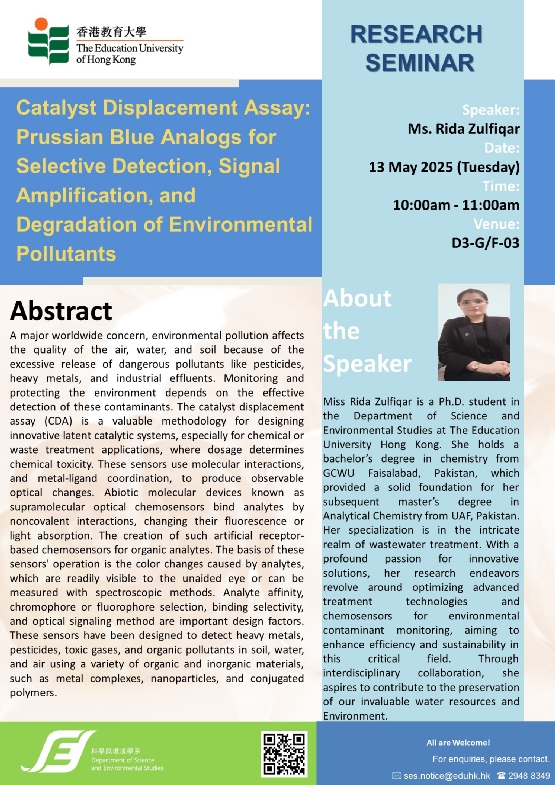

 |
You are cordially invited to participate in the Research Seminar by the Department of Science and Environmental Studies (SES).
A major worldwide concern, environmental pollution affects the quality of the air, water, and soil because of the excessive release of dangerous pollutants like pesticides, heavy metals, and industrial effluents. Monitoring and protecting the environment depends on the effective detection of these contaminants. The catalyst displacement assay (CDA) is a valuable methodology for designing innovative latent catalytic systems, especially for chemical or waste treatment applications, where dosage determines chemical toxicity. These sensors use molecular interactions, and metal-ligand coordination, to produce observable optical changes. Abiotic molecular devices known as supramolecular optical chemosensors bind analytes by noncovalent interactions, changing their fluorescence or light absorption. The creation of such artificial receptor-based chemosensors for organic analytes. The basis of these sensors' operation is the color changes caused by analytes, which are readily visible to the unaided eye or can be measured with spectroscopic methods. Analyte affinity, chromophore or fluorophore selection, binding selectivity, and optical signaling method are important design factors. These sensors have been designed to detect heavy metals, pesticides, toxic gases, and organic pollutants in soil, water, and air using a variety of organic and inorganic materials, such as metal complexes, nanoparticles, and conjugated polymers.
Details are as follows:
|
Date: |
13 May 2025 (Tuesday) |
|
Time: |
10:00 am – 11:00 am |
|
Venue: |
D3-G-03, Tai Po Campus |
|
Topic: |
Catalyst Displacement Assay: Prussian Blue Analogs for Selective Detection, Signal Amplification, and Degradation of Environmental Pollutants |
|
Speaker: |
Ms Rida ZULFIQAR (SES RPg student) |


|
13 May 2025 |

|
D3-G/F-03, Tai Po Campus |




